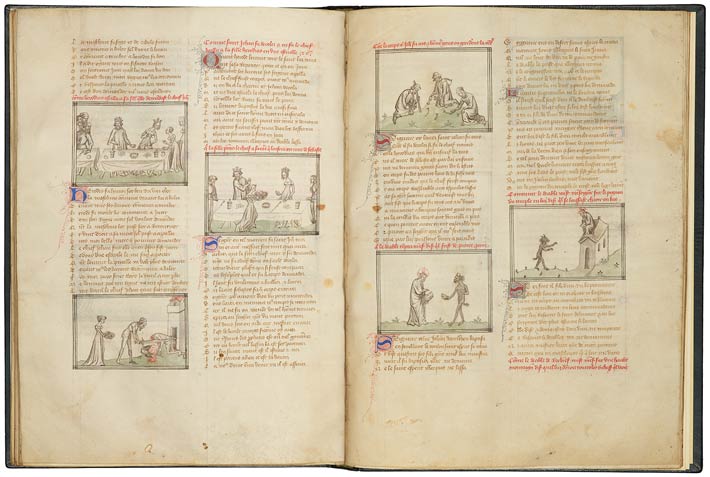
Salome, represented three times in the miniatures at the left, wears a cote hardy with a voluminous skirt but with contrastingly tight bodice, bosom, and sleeves. Except in the top scene, where she wears a coronet, the young girl's hair is loose and falls over her ears — a sign of her maidenhood. In the second miniature, her mother, Herodias, is similarly dressed, but in the first vignette she wears, befitting her queenly status, a surcot with extremely wide side openings. Her braided hair, along with the posts of her tressour, frames her face.
Wasp Waists and Stuffed Shirts
The second half of the fourteenth century was a bleak period in French history. The Black Plague, which first struck in 1348, was a recurring horror. As the Hundred Years' War dragged on, France suffered devastating defeats by the English. Following the Battle of Poitiers in 1356, King John II was captured and taken to London as a prisoner. Fashions changed little during this period.
Men's fashion was dominated by the pourpoint: a close-fitting doublet influenced by the military. With a short flaring skirt and a cinched waist, the pourpoint was padded at the chest and shoulders, giving its wearer a distinctive hourglass silhouette. Pouleines, long pointed shoes, and belts—slender, or the thick "Bohemian" girdle—worn low on the hips complimented the look.
The cote hardy—an outer garment for women—while retaining its voluminous skirt, got even tighter at the bodice, bosom, and sleeves. The resulting look paralleled that of men's fashion. Tippets, decorative strips of cloth hanging from the arms, remained popular. Both men and women continued to wear the chaperon (the hood with attached cape and tail).
